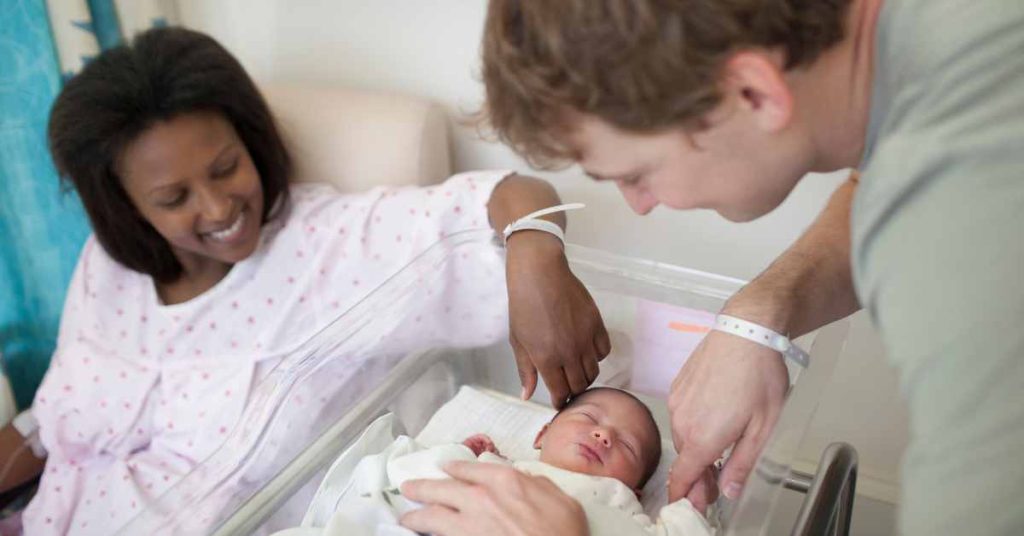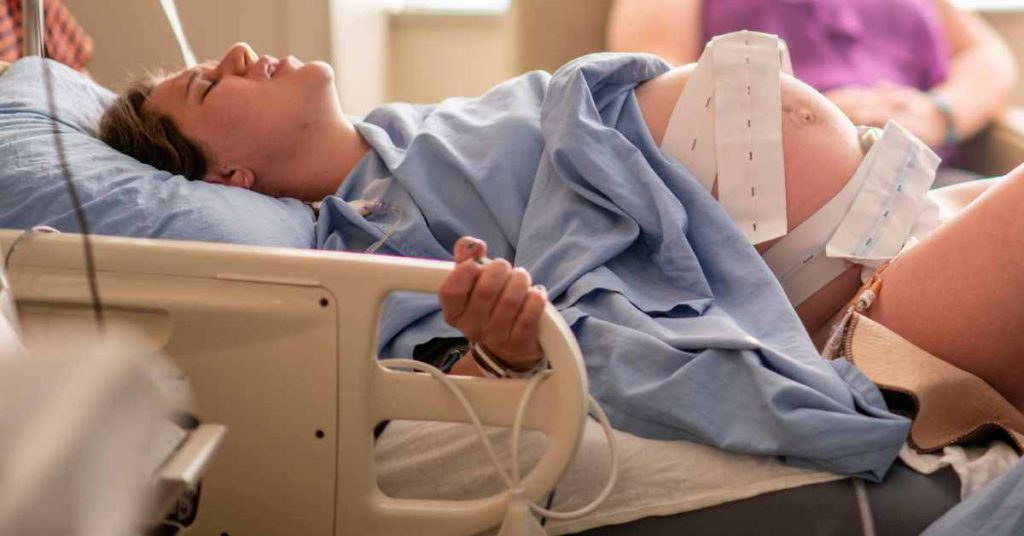Emergency Childbirth: First Aid Tips and Guidelines

Childbirth, while a natural and often joyous event, can sometimes occur at unexpected times and places.
In such instances, being prepared can make a significant difference in ensuring the safety of both the mother and the newborn. An unplanned or emergency childbirth can be daunting and pose unique challenges, especially if it happens away from a medical facility.
Hence, understanding basic first aid steps and guidelines for such situations becomes indispensable. However, it’s crucial to note that while first aid can be invaluable in emergencies, it is not a substitute for professional medical care.
Always prioritise seeking the assistance of trained healthcare professionals when it comes to childbirth, as their expertise is paramount in safeguarding the well-being of both mother and child.
Recognising the Signs of Labor
Distinguishing between true labor and false labor is essential for expectant mothers and those around them. True labor signifies that the baby is on the way, while false labor, commonly known as Braxton Hicks contractions, is the body’s way of preparing for the real thing but doesn’t indicate imminent childbirth.
These preparatory contractions can be irregular and often diminish with movement or change in position. On the other hand, true labor contractions are consistent and intensify over time.

Common signs of true labor include:
- Regular contractions: Unlike Braxton Hicks, these contractions come at regular intervals, become more frequent, and usually last longer as time progresses.
- Breaking of water (amniotic fluid): This can feel like a sudden gush or a steady trickle of fluid.
- Pressure in the pelvic area: Often described as feeling like the baby is “pushing down.”
- Blood-tinged mucus or discharge: Sometimes referred to as the “bloody show,” this can be a sign that the cervix is dilating in preparation for childbirth.
The Stages of Childbirth and What to Expect

Childbirth, one of the most profound human experiences, is typically broken down into three primary stages, each with its unique set of characteristics and challenges. By understanding these stages and what they entail, both the expectant mother and those assisting can better navigate the process and anticipate what’s next, ensuring a smoother and safer delivery.
1. Stage One: Early and Active Labor
- Contractions and their progression: The labor journey begins with contractions that are initially spaced apart but gradually become more frequent and intense, signifying the cervix’s dilation.
- When to head to the hospital or call for help: As contractions become more regular, lasting about 60 seconds and occurring every 5 minutes for an hour, it’s generally time to move to a medical facility or call for professional assistance.
2. Stage Two: Pushing and Birth of the Baby
- Encouraging the mother and ensuring she’s comfortable: Providing emotional support, ensuring a comfortable position, and aiding with effective pushing techniques are pivotal during this intense phase.
- Guiding the baby out and ensuring they start breathing: Once the head appears, it’s essential to ensure the baby’s face is clear of obstructions. Following complete emergence, ensuring the baby begins to breathe is critical.
3. Stage Three: Delivery of the Placenta
- Understanding the importance of delivering the placenta: After the baby is born, contractions will continue until the placenta is expelled, marking the final stage of childbirth. This is a vital process as it prevents potential complications.
- How to handle complications, such as retained placenta: If the placenta isn’t delivered within 30 minutes to an hour post-birth, or parts of it remain inside, there could be a risk of hemorrhage or infection. Immediate medical attention is required in such situations.
Handling the Umbilical Cord

The umbilical cord serves as the baby’s lifeline during pregnancy, supplying essential nutrients and oxygen. Once the baby is born, the cord’s role diminishes, but the manner in which it’s handled post-birth remains crucial for the well-being of both the newborn and the mother. Proper care and understanding of the cord can prevent potential complications and ensure a healthy start for the baby.
Key aspects to consider when handling the umbilical cord:
- Importance of waiting for it to stop pulsating: After birth, the cord continues to pulsate, transferring beneficial blood and nutrients to the newborn. It’s vital to wait until the pulsating stops (typically a few minutes) before clamping, allowing the baby to receive this essential boost of blood.
- How to clamp and cut it safely if necessary: Once the cord has ceased its pulsations, it can be clamped using sterilized cord clamps or tied with sterilized string, placing one clamp or tie close to the baby‘s navel and another a few inches away. Using sterilized scissors, the cord can then be cut between the two clamps or ties, ensuring a safe distance from the baby’s body. This procedure should be carried out with utmost care and under the guidance or supervision of a medical professional.
Basic Neonatal Care Immediately After Birth
The first moments after birth are critical for a newborn’s adaptation to life outside the womb. This transition phase is vital not just from a physiological standpoint but also for establishing early bonding and ensuring the baby’s well-being. Adequate care and attention during these initial moments can pave the way for a healthy start, laying the foundation for optimal growth and development.

Essential steps in neonatal care post-birth include:
- Clearing the baby’s airways: Using a bulb syringe or a clean cloth, gently clear the baby’s mouth and nose of any mucus or amniotic fluid. This helps in ensuring that the baby can breathe without obstructions.
- Skin-to-skin contact for warmth and bonding: Placing the baby directly on the mother’s chest promotes warmth, stabilization of the baby’s heart rate and breathing, and fosters an immediate bond. This contact also facilitates the baby’s instinct to breastfeed.
- Monitoring for signs of distress: It’s vital to keep an eye out for any indications that the baby might be in distress, such as blue or pale skin, labored breathing, or prolonged periods of inactivity. Immediate medical attention should be sought if any of these signs are observed.
- Encouraging breastfeeding or feeding as soon as possible: Early breastfeeding supports the baby’s immune system, providing essential nutrients and antibodies. If breastfeeding isn’t an option, ensuring the baby is fed with an appropriate alternative is crucial for their nourishment and hydration.
Common Complications and How to Address Them
Childbirth, while a natural process, can sometimes present complications that require prompt attention and intervention. Being aware of these potential challenges and understanding how to address them can be vital in safeguarding the health and well-being of both the mother and the baby. It’s essential to remember that professional medical assistance is paramount during complications, and immediate action should be taken to seek expert help.

Potential complications and their recommended responses include:
- Breech births (baby coming feet or buttocks first): Breech presentations can complicate the delivery process. If you suspect a breech birth and are not in a medical facility, it’s crucial to seek emergency medical attention immediately. Avoid attempting to turn the baby unless trained to do so.
- Cord prolapse (umbilical cord comes out before the baby): This is a rare but serious complication where the umbilical cord descends into the birth canal before the baby. If this happens, call for emergency help right away. The mother should be positioned with her hips elevated to reduce pressure on the cord until medical assistance arrives.
- Heavy maternal bleeding: Some bleeding after childbirth is normal, but excessive or prolonged bleeding can be life-threatening. Applying gentle pressure to the bleeding area with a clean cloth and elevating the mother’s legs can help. Seek emergency medical care immediately.
- Resuscitating the newborn: If the baby isn’t breathing after birth, initial steps include clearing the airways and gently rubbing the baby’s back to stimulate breathing. If the baby doesn’t start breathing, CPR may be necessary. It’s crucial to be trained in neonatal CPR and to call for emergency assistance.
- Tips on when and how to call for emergency help: Always have a phone or communication device accessible during childbirth. If any signs of distress or complications arise, don’t hesitate to call for help. It’s better to be overly cautious than to risk potential harm to the mother or baby. Relay the situation clearly and calmly to the emergency operator, ensuring they understand the urgency of the situation.
Remember, the key during complications is swift action and relying on trained medical professionals to navigate the challenges.
After the Birth: Ensuring Safety for Mother and Baby
The moments and days following childbirth are as crucial as the birthing process itself. This period sets the foundation for recovery, bonding, and the overall well-being of both the mother and the baby. Ensuring that both receive proper care and attention during this time can significantly impact their health and ease the transition into this new phase of life.

Key measures to ensure safety post-birth include:
- Importance of immediate medical check-ups: Whether the birth took place at home or in a medical facility, it’s essential for both mother and baby to undergo a thorough medical evaluation soon after the delivery. This helps in identifying and addressing any immediate health concerns.
- Monitoring for signs of postpartum complications in the mother: Postpartum complications, such as infections, excessive bleeding, or postpartum depression, can arise after childbirth. It’s vital to monitor the mother’s physical and emotional well-being, being alert to any unusual symptoms, and seeking medical help if needed.
- Recognizing the importance of postnatal care for the baby: The baby’s early days are marked by critical developmental milestones. Regular check-ups, vaccinations, and monitoring of growth patterns are essential. Being aware of and addressing any potential health concerns early on ensures the baby has a healthy start in life.
Continued attention to the health and well-being of both the mother and the baby is essential. It ensures that any potential issues are promptly identified and addressed, leading to a smoother and healthier transition into motherhood and the baby’s early life stages.
The First Aid Nest run public and workplace first aid courses, Australia wide.
Our workplace first aid courses can be run at your site.
Our public classes are here in Sydney and are the best option if you are an individual, a couple or a group
of just a few people.
Our sophisticated system will take the headache out of renewal for you too. Lose your certificate? No problem, just log in and download your certificate again anytime. We will also send you reminders about when your certificate is about to expire!
Book your spot or workplace with us today, contact us with any questions, or head to our FAQ page
